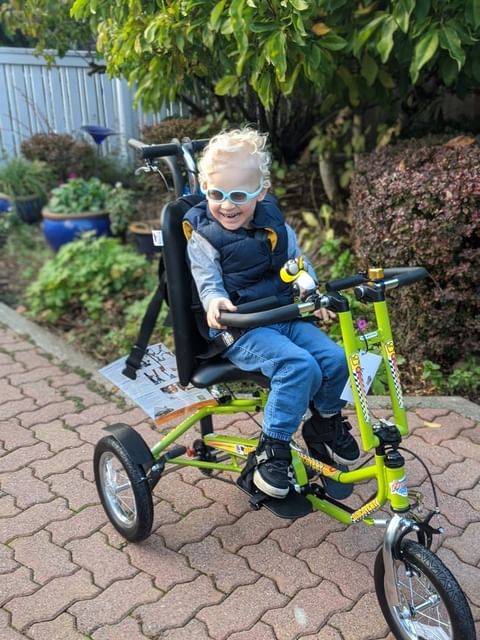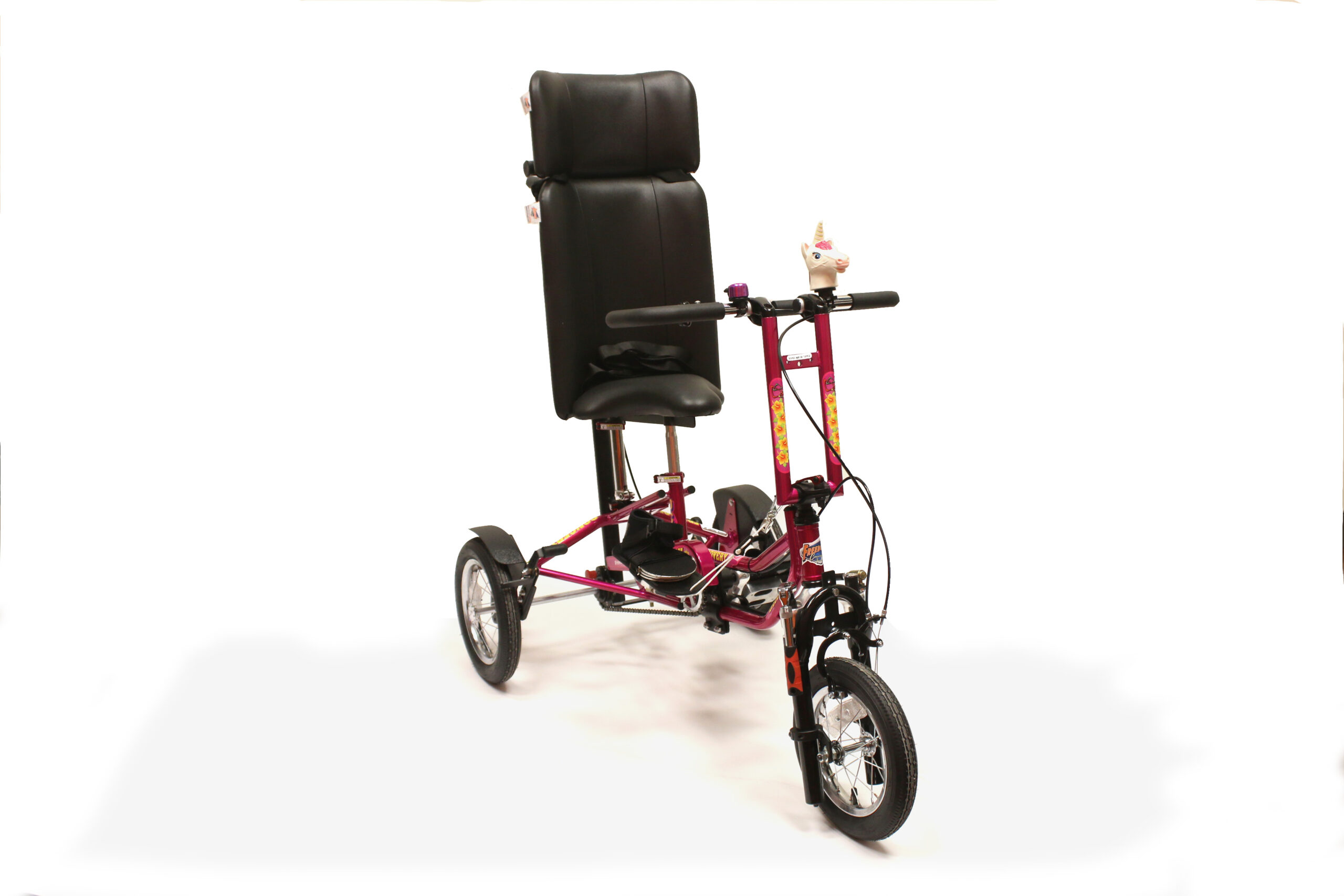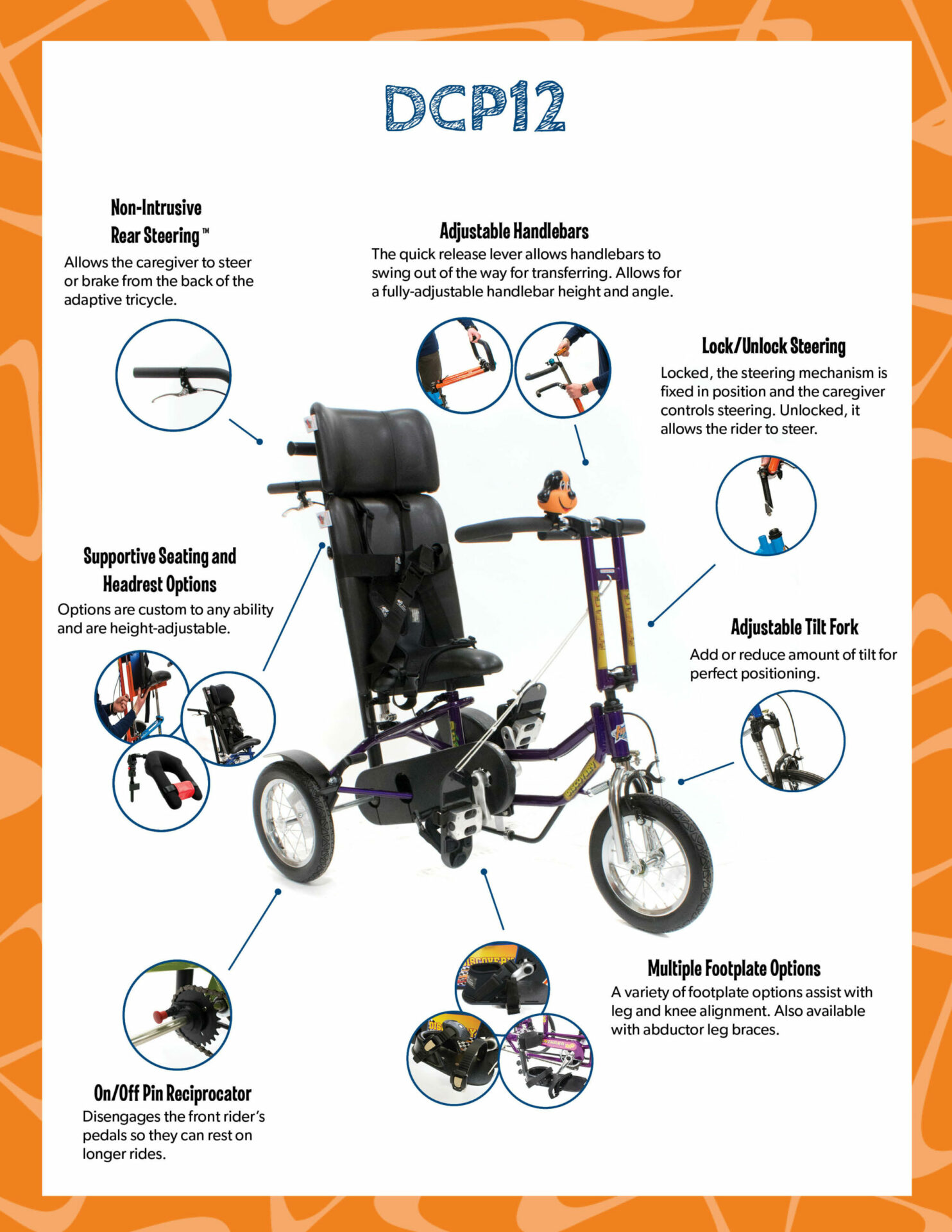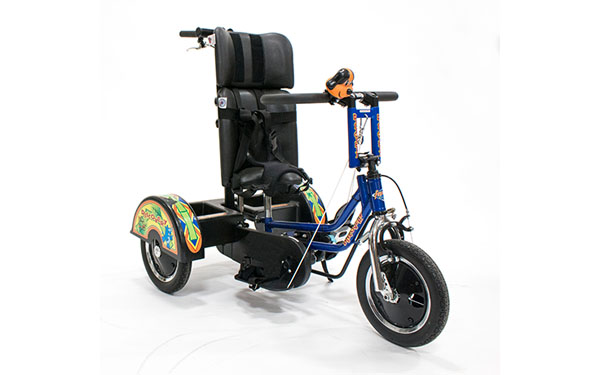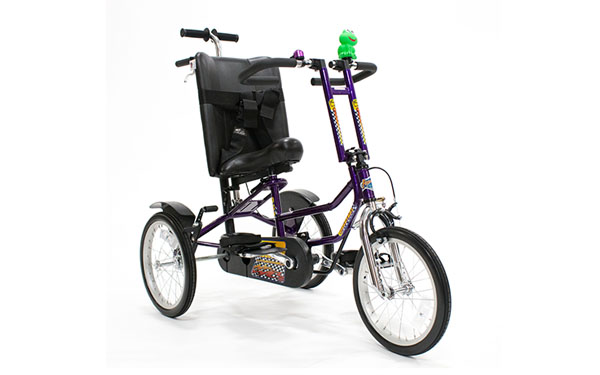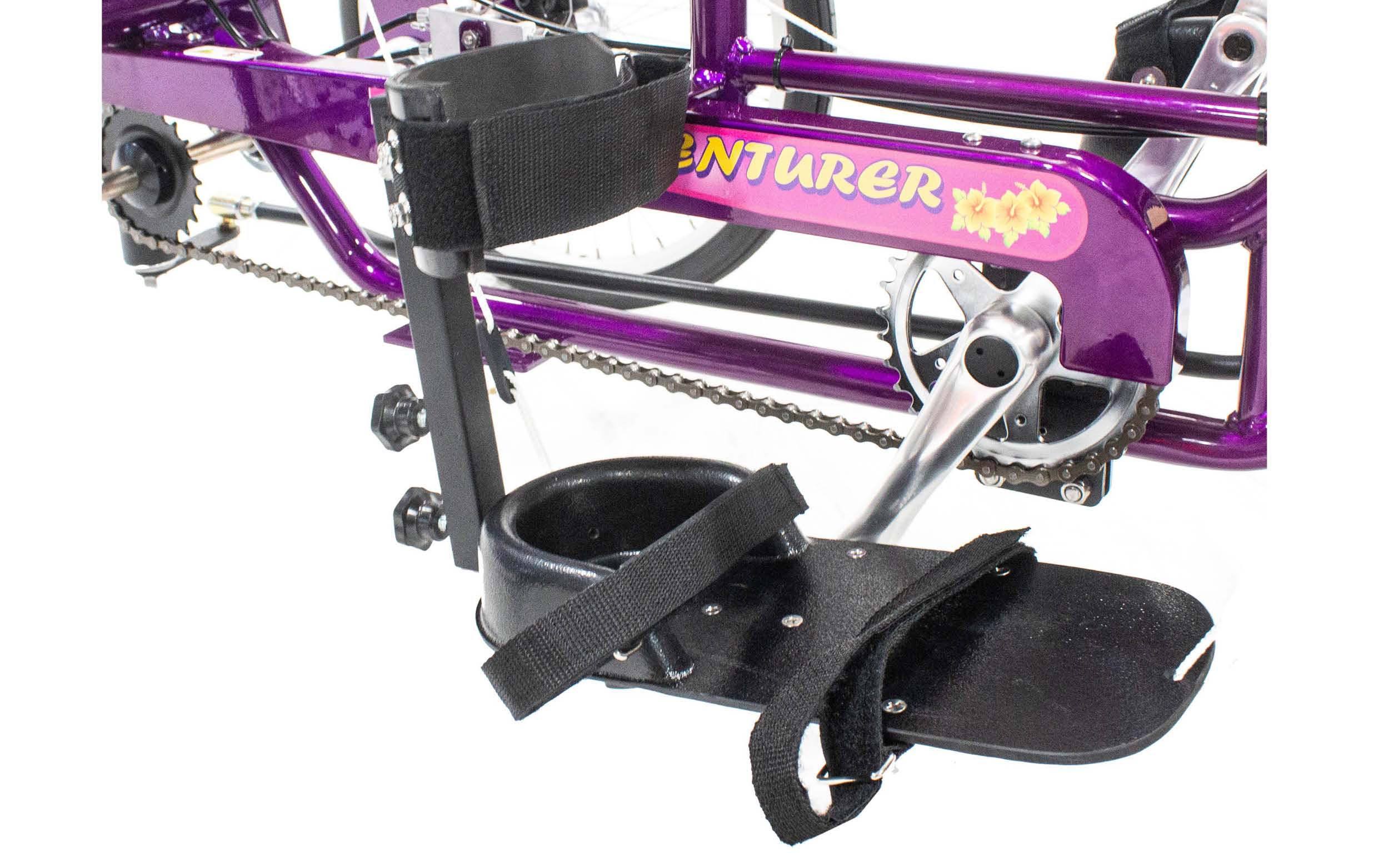DCP12
Age Range: 4 – 8 years old | Inseam Range: 13” – 21” | Weight Limit: 125 lbs
The DCP12 allows kids ages 4-8 to get out and enjoy adaptive biking with their friends. This bike provides excellent stability and fits through standard doorways, making it a popular choice for homes, schools, and therapy clinics.
Features & Benefits
- Fits through standard doorways with a width of 29”.
- Quick release mechanisms on most adjustable parts to fit the bike to the rider’s exact size.
- Candy Blue or Hot Rod Purple standard color options with many other upgraded color options available.
- 12″ smooth solid puncture-proof tires – Great for indoor or outdoor riding.
- Independently adjustable hoop handlebars with telescopic posts.
- Locked or unlocked handlebar positioning to limit or control the rider’s ability to steer the bike.
- Direct drive gearing with easy pedal power to encourage reciprocal motion of the legs.
- Standard mountain footplates with additional available upgraded footplate options.
- Multiple options available for brake positioning and an option to add a secondary brake.
- Standard chainguard to protect fingers from the bike’s chain.
- Supportive Low-Back seating system with multiple options to add High-Back seating, lateral supports, adjustable tilt fork, harnesses or head supports.
- Standard bike essentials including safety flag, wheel reflectors, animal squeaky horn or bell and multi-tool.
- Multiple accessory options to further customize the bike to the rider’s needs.
Ford’s Freedom
When Effie Parks’ five-year-old son Ford was diagnosed with CTNNB1 syndrome when he was 16 months old, he was one out of only 30 people in the world with it.
“Now there are about 200 other kiddos from around the world,” Effie said. “It was found in 2012, so all the patients popping up are pretty young, there aren’t a lot of adults to look towards to see what it’s going to be like in the future.”
Ford is not creating a protein called beta-catenin, a protein that helps cells grow and reproduce. This causes global developmental delay, sensitivity to light, a lack of pigment, hypotonia, dystonia, and eye problems. Ford is non-verbal, and can’t sit, crawl, or walk.
